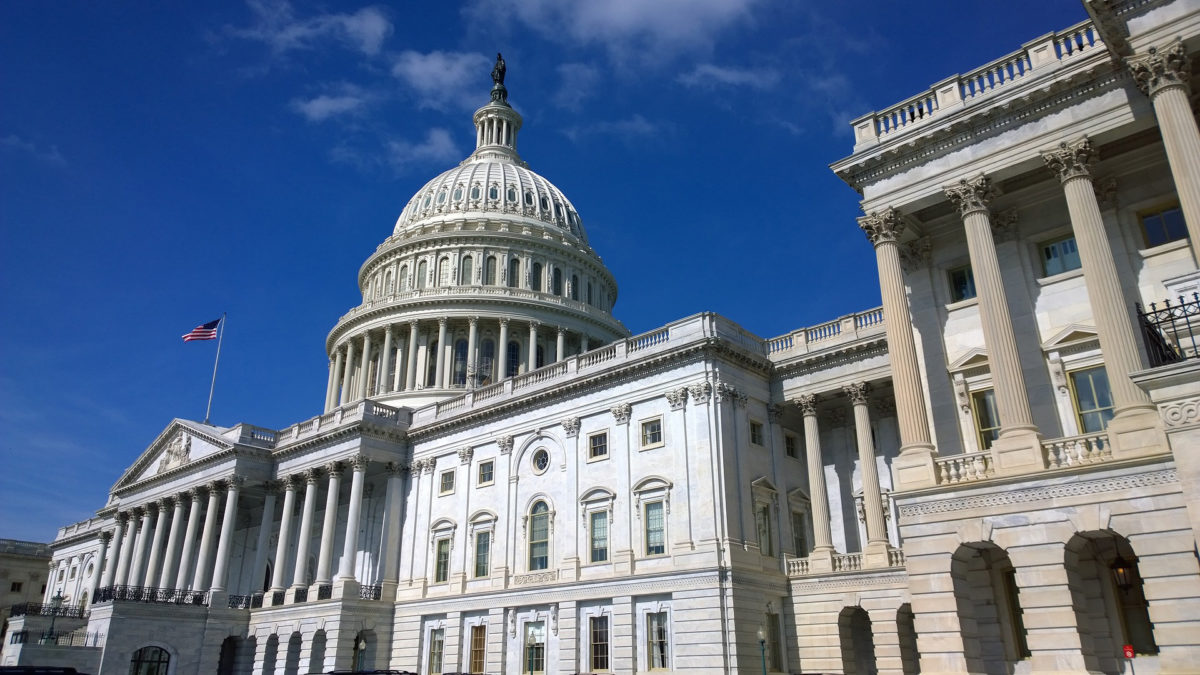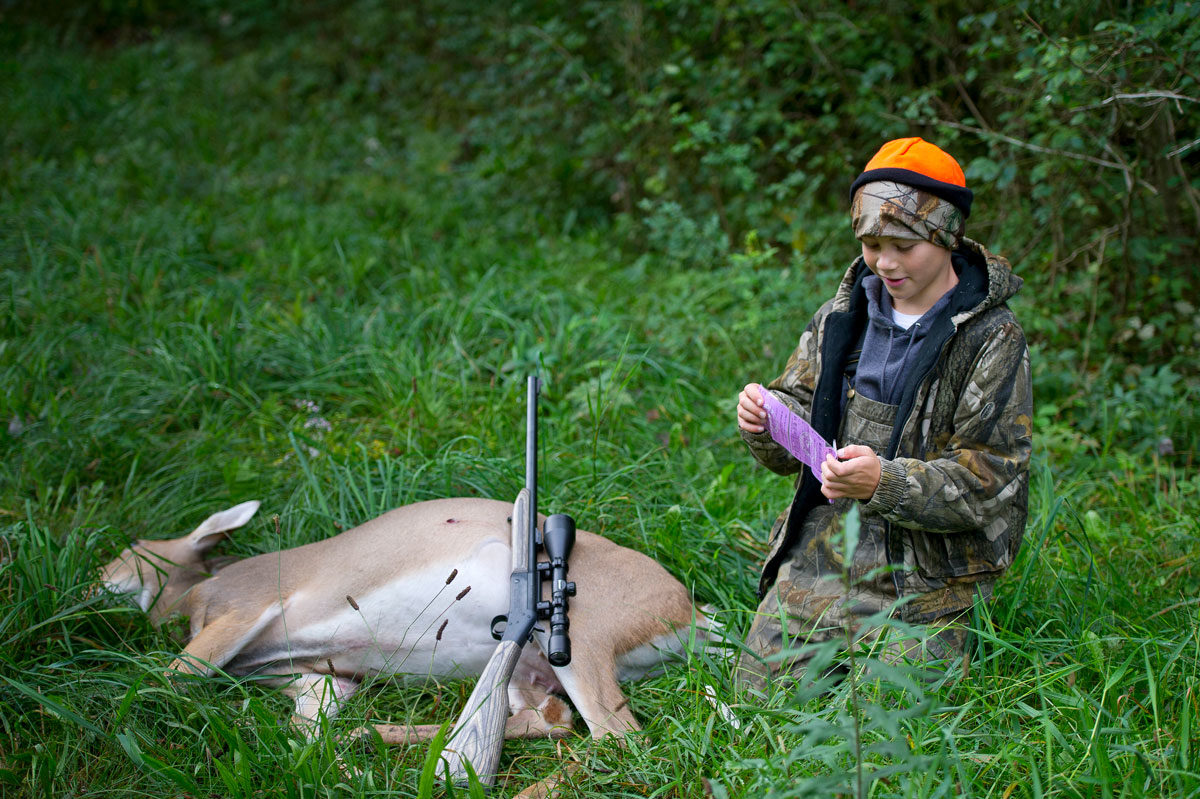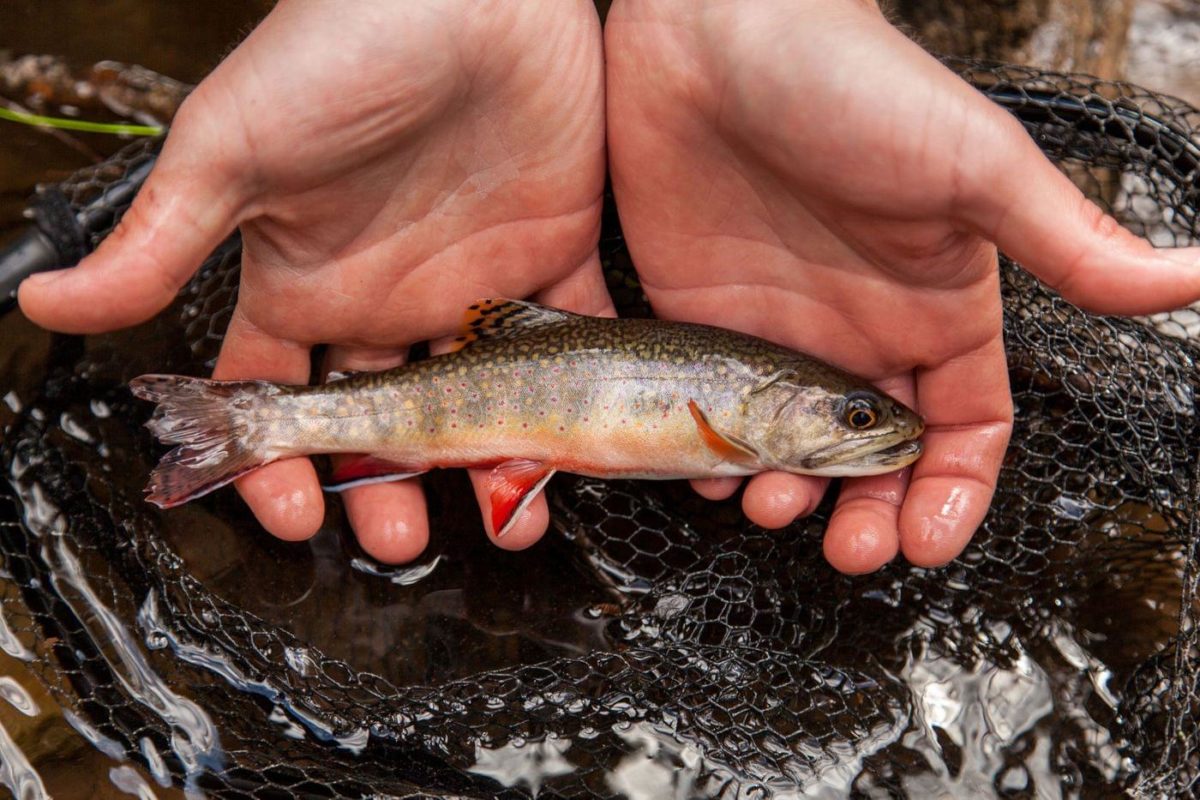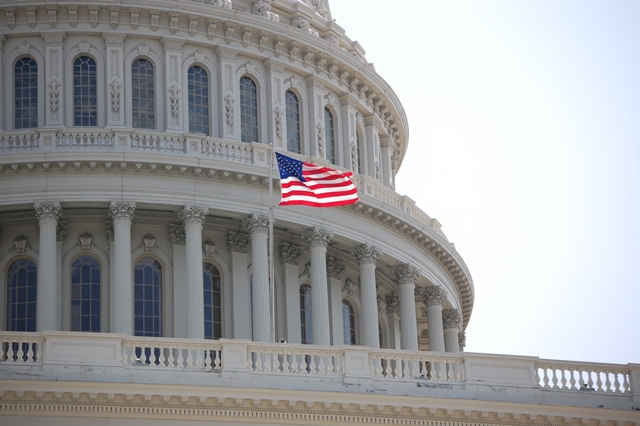Conservation groups rally together to voice support for fish and wildlife habitat, wetlands, and headwater streams
Conservation groups are opposing the Administration’s rollback of the 2015 Clean Water Rule, which was finalized today. The Administration’s action will leave roughly 50 percent of wetlands and 60 percent of stream miles across the country vulnerable to pollution and destruction. The 2015 Clean Water Rule had clarified longstanding Clean Water Act protections for millions of acres of wetlands and many headwater streams that protect communities from flooding, contribute to the drinking water supplies of one in three Americans, and provide essential fish and wildlife habitat that supports a robust outdoor recreation economy worth $887 billion.
“Sportsmen and women are outside every day experiencing the benefits of clean water,” says Whit Fosburgh, president and CEO of the Theodore Roosevelt Conservation Partnership. “Rolling back these protections for wetlands and headwater streams threatens our hunting and fishing traditions and the outdoor economy that powers our communities.”
“No one wants to fish a lake covered in toxic algae, duck hunt in a bulldozed wetland, or pitch a tent next to a creek filled with feces,” says Collin O’Mara, president and CEO of the National Wildlife Federation. “Unfortunately, this Administration is working on multiple fronts to rewrite the rules that protect our waters, hoping no one will notice. The collective impact of these changes would be devastating for public health and wildlife across the country—and we will continue to fight to protect America’s waterways every step of the way.”
“Clean water is a basic right of every American,” says Chris Wood, president and CEO of Trout Unlimited. “To be effective, the Clean Water Act must be able to control pollution at its source. Unfortunately today’s action by the EPA places the health of 60 percent of the stream miles and the drinking water of one in three Americans at risk. Trout Unlimited will not rest, and will use all of the tools at our disposal, to compel EPA to reverse course on this misguided direction.”
“More than 100 million people across the US engage in fish- and wildlife-based recreation, approximately half of whom participate in fishing,” says Patrick Berry, president and CEO of Fly Fishers International. “It is clear the opportunities available to enjoy these outdoor pursuits is directly limited by the health of our natural systems and their ability to support healthy and abundant populations of fish and wildlife. Rolling back protections of wetlands, our lakes streams and rivers—some of the most diverse and productive wildlife habitats—not only compromises our natural heritage, but threatens the cultural and economic value of recreational fishing.”
“This rule will irreparably impact wetlands in America’s duck factory—the prairie pothole region—and threaten the health of riparian habitat critical for big game and 80 percent of all wildlife species,” says Land Tawney, president and CEO of Backcountry Hunters and Anglers. “Weakened protections translate to lost access and reduced opportunities for hunting and fishing. Hunters and anglers must not stand for shortsighted polices that compromise the integrity of fish and wildlife habitats that have been safeguarded for decades under the Clean Water Act.”
“EPA’s decision to repeal the Clean Water Rule is wholly unsupported by science, can’t be squared with the clear intent of the Clean Water Act, and fails the common sense test,” says Scott Kovarovics, Executive Director of Izaak Walton League of America. “To make matters worse, this is only a prelude to the second blow when EPA finalizes a new rule later this year that will further undermine protections for small streams, wetlands, and drinking water supplies across America.”
“The EPA is tossing out 50 years of peer-reviewed science and in doing so threatens to undermine the integrity of the Nation’s waters that support fish and wildlife,” says Doug Austen, executive director of the American Fisheries Society. “Allowing unchecked pollution and destruction in the waters and wetlands in the upper reaches of a watershed imperils the sustainability of fish stocks in both upstream and downstream waters and places valuable recreational fisheries and endangered species at risk.”
In a 2018 poll, 80 percent of sportsmen and women said Clean Water Act protections should apply to headwater streams and wetlands. Additionally, 92 percent believe that we should strengthen or maintain current clean water standards, not relax them.
More information about the proposed changes to the Clean Water Rule is available HERE.









Rolling back water protections is one of the worst and dangerous decisions we could make!
Save our fresh water. We need fresh water to live.
Repeal!!!
Clean water in the U.S. (and globally), should and must remain a priority for the health of all living things.
Just have fought for clean water since high school…for nearly 50 years now. Just HATE to see us lose ground with protecting our wetlands and headwater streams. What are they THINKING?!?!? Please do what you can to get this stopped!
This is not a rollback of 50 years of work and science. This is a roll back of a 2015 policy that was a government over-reach that caused mass confusion for ranchers and land-owners. The quotes in this article are gross exaggerations and overly dramatic.
Eric Hayes…you are right.
The POTUS & EPA has decided to trade away completely one industry (hunting, fishing, outdoor recreation) for another (oil and gas). This is unacceptable.
How can something called the Environmental Protection Agency allow water to be polluted!! That’s insane!!
Simple….Donald Trump
Republicans don’t drink or use water in any way? WTF, EPA? How stupid and utterly mean-spirited can you be?
Mixed Emotions on this one. The two facts that I am aware of; The EPA has been quite heavy handed on a lot of programs making access to wetlands difficult and costly. It is difficult to fault the administration but they may want to review the agency and the power it is given.
I written many sportsmans organizations ,magazines, SCI etc. asking the logical question of why haven’t they taken a stand against trump and his corrupt administartion. It would appear that because he is backed by the nra he has become untouchable . I have been a conservationist thru hunting and owned guns for over 63 years. It is my sad belief that the nra and other far right organizations accompanied by trumps ignorance will be the reason that this kind of thing happens. I also believe that this position will get worse and losing safe water is the tip of the iceberg. Now I know I will either be ignored or blasted as a ‘LIB” but I have voted for more republicans in my life than democrats but the GOP has been turned into cowards by a bully. Just as the position on allowing any idiot to have guns is eroding the right to have guns this type of roll back on clean water will allow corruption in other areas. Will the sportsman organizations and hunters wake up, I don’t know but it better happen soon.
I too voted Republican for a long time. I now realize though, they only care what their donors want and trade in misinformation to accomplish it. Money in politics has a stranglehold on all republicans and corporate democrats and they have mortgaged our future and that of our kids/grandkids just to stay in power. I don’t agree with all their policies, but Bernie and any other progressive who wants to get the money out and establish term limits will get my vote this time. Maybe we can shock the establishment back to the reality that they must return to listening to their constituents.
Its unfortunate the GOP is more concerned about corporate profits than natural resources. The GOP will lose sportsmen support.
No rollback of 2015 Clean Water Rule. America should be entitled to CLEAN water in, creeks, streams, rivers, lakes, wetlands, etc. My wife and I live in Las Cruces, NM. where there is rarely any water, but we love to travel wherever water is available, from the San Juan river to Alaskan rivers to Mn., the land of 10,000 lakes. If this thinking does not change, the present administration will be short lived. I am a conservative, and my message to the admin. Is, “Don’t piss off a conservative” when clean water is such a no brained!!
Isn’t the “rollback” is nothing more than reverting to the pre-Obama standard for “waters of the United States”? If so, a little less hysteria and a little more objective analysis might be a good idea.
We must do all we can to keep our environment clean and pollution free.
Terrible move on Trump’s part.
The only environmental quality President Trump considers involves the size of the exhaust fan in his bathroom! He has sons who hunt. You need to work on contacting his sons, making a case, and possibly get his attention.
Simple as pie….Vote him out of office, he doesn’t belong there anyway.
We must stop President Trump’s attack on every environmental law and regulation, which have been put into place over many decades to protect both the natural world and human health. His corruption of the EPA is astounding!
The only way this insanity is going to stop is come November 2020 he has to leave office, so that is where we come in to the picture. VOTE HIM OUT !
This country cannot survive 4 more years of Donald Trump. We have a President who is terrorizing our air, water, wildlife. This is so wrong ‘
absolutely no data of what is going to be allowed to cause problems is quoted here, just generalities. It would be nice to see real data and not just a bunch of statements meant to draw an emotional response no matter what the actual facts are. Sounds like another liberal gloom and doom post to me full of fear mongering.
Anyone who cares about hunting, fishing, public lands and their children and grandchildren should care about this issue. I would lobby hard against this destructive dismantling of one of our earliest and most important landmark environmental protections (and what will be found illegal in litigation) . The hunting and fishing community have long been advocates for accessible and clean public lands. Thank you for your dedication and support.
Its really sad that most people see all this in such a radical way. The division in this country between “left” and ” right” is disastrous. NONE of our politicians care what we want or think. What have the Republicans or Democrats done for any of us? Spend us into debt that will bind our grandchildren to servitude, waste our natural resources, kill our best and brightest young people in wars that go on forever? As sportsman and outdoor enthusiast we should do our research and come together with a plan of action. The Obama rule in 2015 did do some ridiculous stuff. Is repealing all of it the right thing to do? I contacted both my Senators in Az. They dont have a clue.
Ask Flint Michigan how they are doing with their polluted water
It is IMPERATIVE that Republican senators and members of Congress know exactly where we stand on this issue. Only they have any chance of reaching the Administration. If your Senator(s) and/or Member of Congress is a Republican, it’s on YOU to let them know – in no uncertain terms – that you oppose the Clean Water rollback and strongly urge them to stand up to this misguided and WRONG action by the White House. The 2015 WOTUS Rule was crafted only after years of painstaking work (including input from ALL stakeholders); to toss is aside like one tosses out a careless tweet is an insult to all American sportspersons – and everyone who cares about the natural world.
This administration has one common theme-ignore science and what’s best for the planet, and appeal only to the short term gains on wall street. Clean water and how watersheds operate has evaded most decisions Trump makes. Natural Resources, he feels, are an impediment to prosperity. We know, that they can play be a big part in our economy. I guess Mallards and other waterfowl, as usual-loose.
Please don’t roll back on water protections. They are to protect everyone from polluted water, air. Please reconsider rolling back the water and air protections please. The wildlife needs to stay protect from hunters. Our air, water, the planet, wildlife, and the envirement needs protection and keep from being harm more. Please leave our clean water and air alone please. Please don’t change rules to the water and air protections please let them be.
Clean Water at all levels is a birthright, an inalienable right, tht our Governments at all levels should support, defend and monitor. Going forward, clean water resources will be a major factor in sustainable economic and healthy population growth. We need to elevate our environmental standards to remain good stewards of our country and conservation heritage. Shame on the politicians and Bureacrats from failing to do their basic responsibility to protect and serve the public..